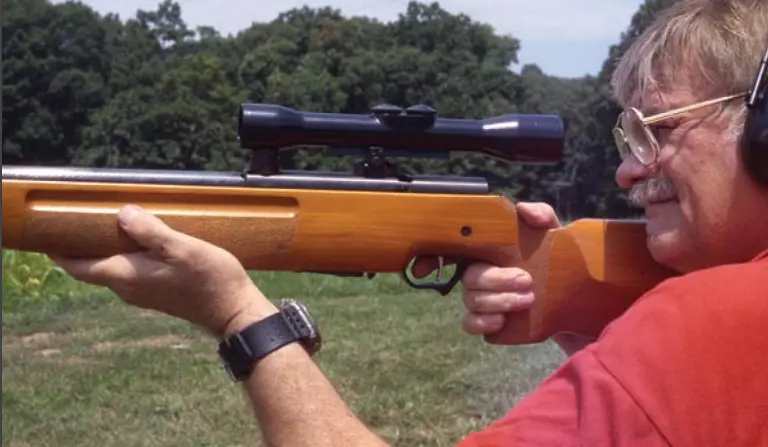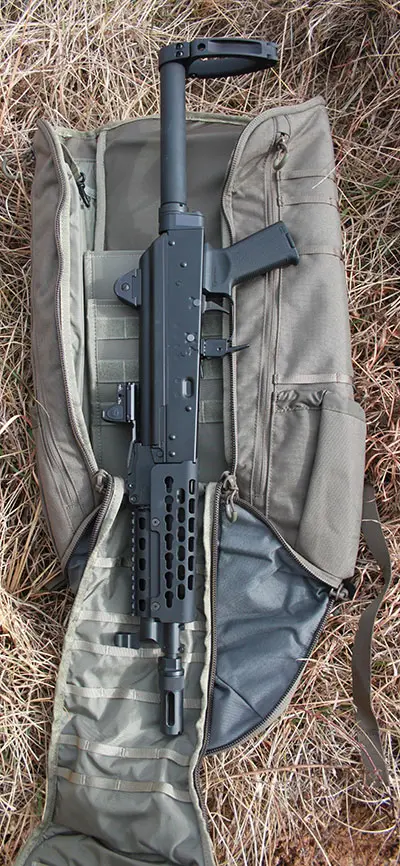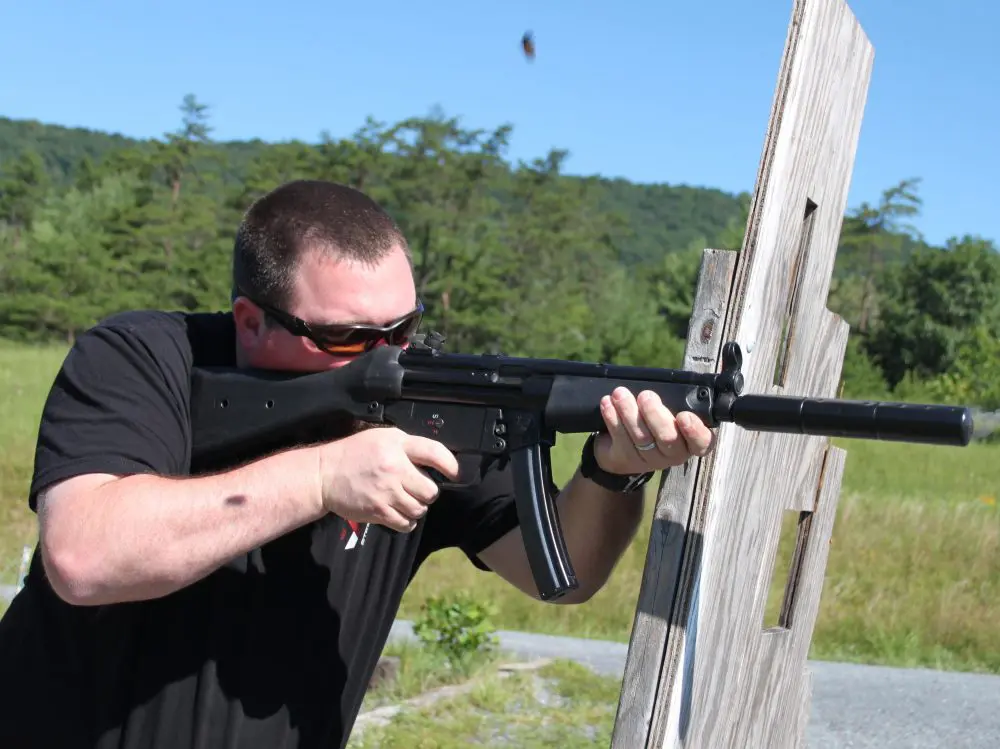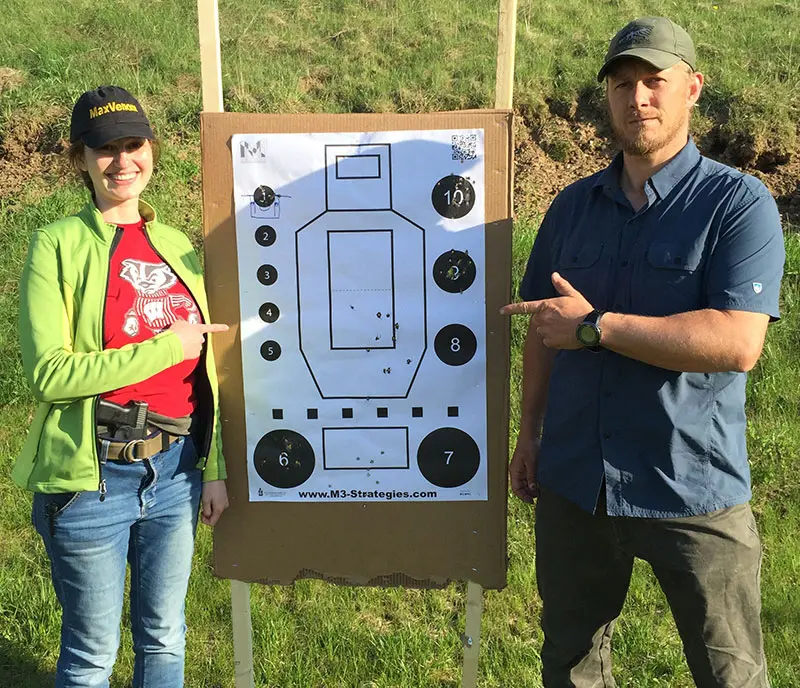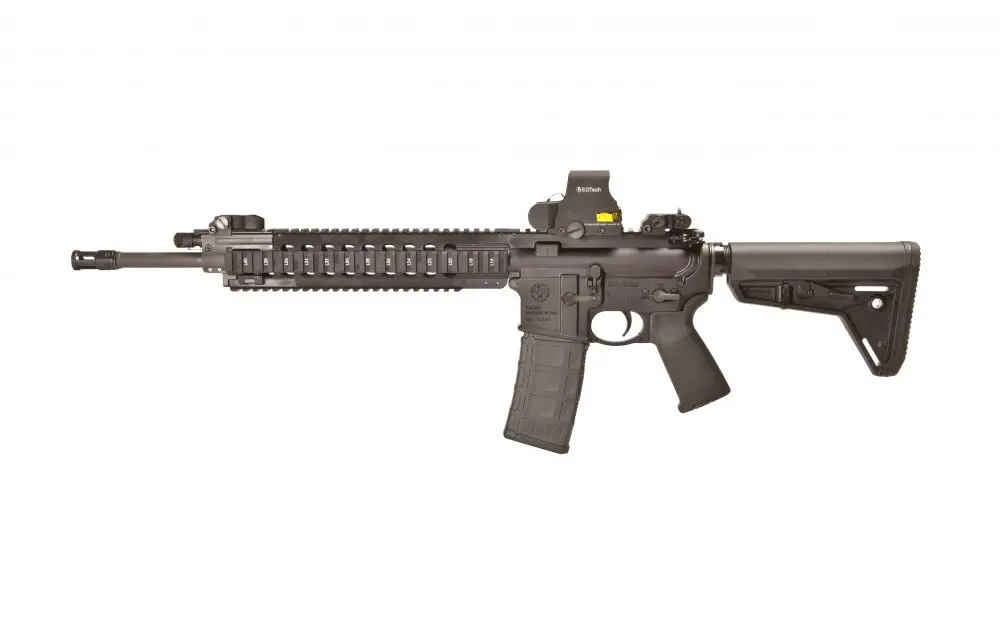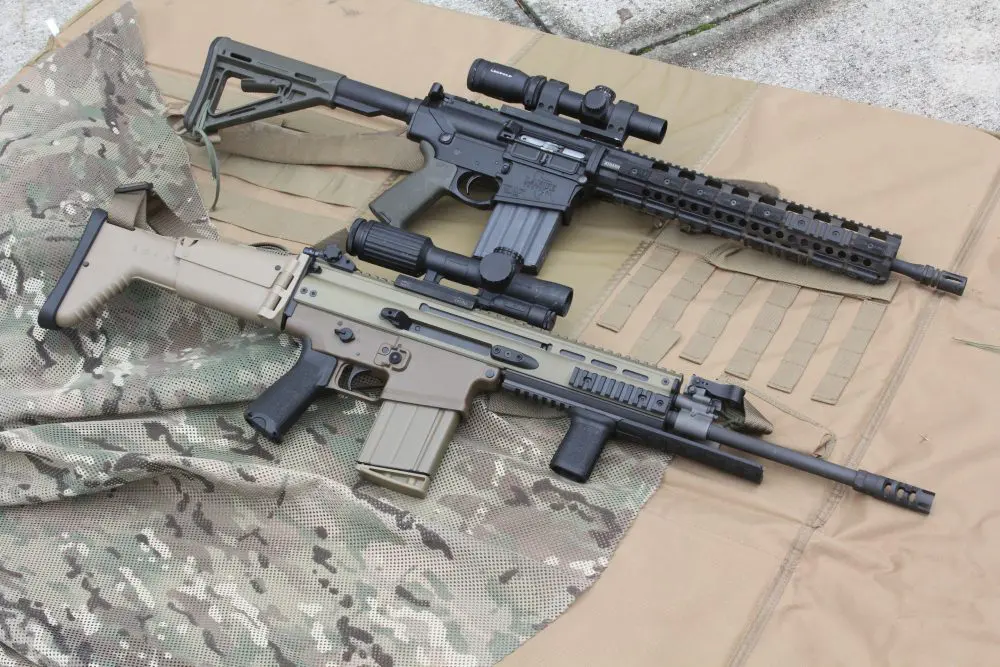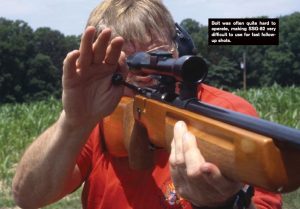
It was billed as a sniper rifle produced for the East German Stasi—the dreaded Secret Police of the DDR. Because the Stasi trained many terrorist groups during the Cold War and I trained many anti-terrorist units, I always had a professional interest in the Stasi. However, I had never encountered a reference to these rifles and had never talked to anyone who specialized in intelligence about the Stasi who had heard of them. Still, I found them interesting and, when I had a chance to purchase one recently along with more than 500 rounds of commercial RWS ammo which was allegedly designed for use in these rifles, I bought the rifle.
Table of Contents
BRIEF OVERVIEW OF THE SSG-82
Close examination of the SSG-82 and a basic knowledge of German soon corrected the first myth about these rifles. The “SSG” designation has led some to assume that Steyr made the rifles. I do not believe this is the case. The designation SSG comes from the German Scharfschutzengewehr, which translates as “Sharpshooters Rifle.” Basically, SSG is a designation for a precision or sniper rifle.
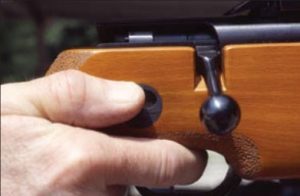
The most famous rifle with this designation is, of course, the Steyr SSG; hence the mistake. Determining exactly who did make the SSG-82 is more difficult. Some sources speculate that “Wieger made them,” but Wieger is actually a term used to designate export weapons from VEB Wiesa in Suhl, and is basically a combination of the words Wiesa and Germany. VEB translates roughly as “state-owned enterprise.” Other sources speculate that VEB Ernst Thalmann of Suhl produced the SSG-82. Since Thalmann was known for the manufacture of rimfire match rifles, the SSG-82’s stock, which resembles that of a .22 match rifle, might argue for this origin. I think that the rifle was definitely produced in Suhl and does not include any parts from Steyr.
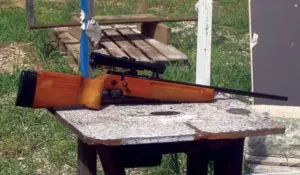
Another myth about the SSG-82 is that it was designed for border guards who were in towers along the border between East and West Germany. I’ve fired a substantial percentage of the world’s military rifles, including most of those from the old ComBloc, and there are some inconsistencies in arguing that the SSG-82 was used for this mission. First, this is a rather heavy rifle—about 11 pounds—with a stock designed for offhand shooting. Most importantly, there are no sling swivels on the rifle. For a rifle designed for border guards who will be climbing into position and moving around on a tower, this seems quite an omission. This is an even more apparent oddity if one considers that ComBloc weapons in particular tend to have sling swivels. I would question, too, why the East German Border Guards would order a 5.45x39mm rifle specifically for use against border crossers. They could have easily “sanitized” the area where a refugee was attempting to cross, with a light or medium machine-gun such as the RPK or PK. If a more accurate and precise weapon were needed, it would seem to have made more sense to use a rifle firing a more powerful round. The Dragunov might have been a good choice. The SSG-82 certainly would not have been.
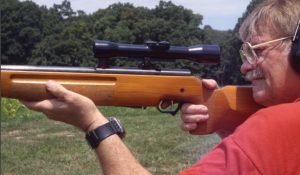
I have also seen this rifle attributed to East German police assigned to airport security. Many of the same inconsistencies that would apply to use by the Border Guards apply to airport security. However, some argument could be made that precision rifles for airport security police were only contingency weapons which would be used to deal with hijackers; hence, they would be stored most of the time and only issued in an emergency. Maybe, but once again, why a special rifle in 5.45x39mm caliber?
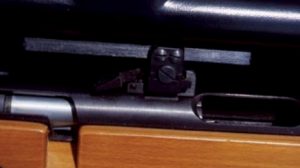
The 5.45x39mm round has no great reputation for accuracy. It is an assault rifle cartridge developed to give the Warsaw Pact a lighter weapon and cartridge combo to compete with the 5.56 NATO round. As I contemplated this issue, it occurred to me that the SSG-82 might have been developed for some type of match usage where the service rifle cartridge was required. My friend Tim Mullin, who tested the SSG-82 with me, feels that this was most likely a “Running Deer” rifle developed for the use of East German Olympic athletes. The only problem with that is that I have seen reports that Century imported 600 of these rifles. East Germany was famous for pampering Olympic athletes, but I doubt they would produce 600 rifles just for use by one group of Olympic shooters—unless the rifle was used for competition all over the country to develop Olympic athletes.
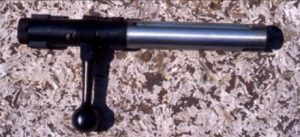
I’m still not really sure for whom the SSG-82 was designed. It is possible that the 5.45x39mm cartridge was chosen since the rifle was being built by Ernst Thalmann, which had the barrel-making machinery to produce a heavy barrel .22-caliber rifle. Given that scenario, Thalmann would have manufactured a rifle as similar to those it normally produced as possible. But why not add sling swivels? If, indeed, more than 600 of the rifles were produced, then it is likely that it served some official purpose. It may not have been the most efficient tactical precision rifle, but at least it was produced in the DDR!
THE SSG-82 ROLE
The actuality may well be that the SSG-82 served in a combination of roles. The DDR, like the Soviet Union, had an active training program for Communist youth to prepare them for military service. Marksmanship was a key part of this program. The SSG-82, which was chambered for the ubiquitous 5.45x39mm service cartridge, could have been used for centerfire training. Running Deer competitions might even have been included in the training, with the hope of discovering future marksmen to enhance the DDR’s Olympic team. With the SSG-82 already in the system, it would have been possible for police units needing a small number of precision tactical rifles to have acquired them as well.
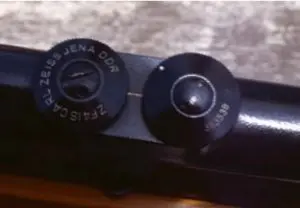
The above is all speculation, however. I don’t know who really used the SSG-82 and for what. I did get a chance to thoroughly test the rifle, though, and draw some conclusions about its performance.
The SSG-82’s 11-pound weight has already been mentioned. Other dimensions are an overall length of just under 43 inches and a barrel length of 23 inches. Although this is a “heavy” barrel, it is a 5.45mm heavy barrel rather than a 7.62mm heavy barrel. This free-floating barrel is hammer forged, which may be another reason some assumed this rifle was produced by Steyr. The stock is interesting and although it appears blocky, it is actually quite comfortable. As already mentioned, the style is similar to European target rifles. The comb is straight and high, and the pistol grip is quite ergonomic. Stippling around the pistol grip and on the forearm allows a very secure grip on the rifle. Another feature copied from Steyr is the butt plate, which uses spacers to increase or decrease the length of pull.
HANDLING THE SSG
The bolt is non-rotating and locks with four lugs. It employs a spring-loaded claw extractor and a plunger ejector. The trigger is adjustable using a screw in front of the trigger. The box magazine holds five rounds and appears to be similar to a cut-down AK-74 magazine, though the magazine well will not take an AK-74 mag. The magazine release works in AK fashion by being pressed forward. Unlike most sniping rifles, which employ a tang safety or a crossbolt, the SSG-82 has a sliding button on the right side of the stock. It seems to work best if operated with the thumb of the shooting hand as the trigger finger moves into position.
The standard scope for the SSG-82 is a Zeiss 4X32mm. Note that this scope was manufactured by Zeiss Jena—the original Zeiss factory overrun by the Russians late in World War II. The mount is of turret style: when a stud on the front of the mount is placed into a keyway, then rotated 90 degrees, it is locked by a thumb catch. Two dials are atop the scope, one for elevation and one for focus. Windage is adjusted by backing off and tightening opposing screws on each side of the mount. The reticle is a post with two additional posts at 90 degrees on either side. The low magnification with this reticle would seem to argue that this rifle might have indeed been intended for use on moving targets such as the Running Deer, but it would also suffice for urban tactical usage. After all, the Dragunov uses a 4X scope as well.
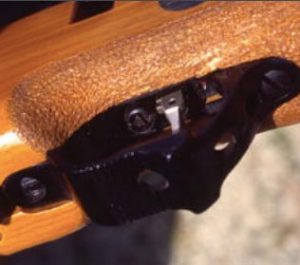
The rifle came with RWS 59-grain commercial ammo, which allegedly is Note trigger adjustment screw in front of trigger and shape of trigger guard, which will allow it to rest on the palm quite comfortably. SSG-82 Adjustment knobs on Zeiss scope for elevation and focus. SWATMAG.COM S.W.A.T. » SEPTEMBER 2007 75 www.break-free.com (800) 852-0300 ©2007 Armor Holdings, Inc. 2+’4+8 ;(8/)’:58 685:+):58 67<;74,;-8):)<-4A CLP from Break-Free®. It cleans, lubricates and protects. Not to mention, amazes me. CLP is high-quality synthetic oils and corrosion inhibitors combined to create a unique formula that’ll complete these three important tasks all at once. It’s recognized worldwide as the gold standard in performance and protection. Look for it at leading sporting goods and gun stores. You can’t aim higher than CLP. AHI-7476 BF_CLPAd_MarksmanREV(d)1 1 6/13/07 4:52:09 PM the most accurate in this rifle. When I tested the rifle, however, I had 25 rounds of East German military 5.45x39mm ammo as well. During the sighting-in process, I found that cases were hard to extract with either type of load. Certainly, it would have been difficult to consistently use this rifle for quick follow-up shots in a tactical situation. I also found that, even when I maxed out the elevation adjustment dial, groups were still a couple of inches low at 100 yards. In addition to problems with extraction, I had two cases in which the extractor overrode the cases, requiring the use of a cleaning rod to knock them from the chamber. On the positive side, the trigger pull was quite good. Another indicator that the SSG-82 was not designed as a sniping rifle became obvious when I attempted to fire-prone with it. The stock proved very uncomfortable for use in the prone position.
IN SUMMARY
In reports I had read about this rifle, the general consensus was that it was not really accurate enough to serve as a sniping rifle. My own tests would seem to bear this out. At 100 yards, I would consistently get two shots into less than 1/2 inch, but the third shot would then be about an inch out, opening the group up to 1 1/2 inches. This happened to me three straight times and to a fellow shooter twice. By the time I had fired 50 rounds, it was getting so difficult to work the bolt that I decided to stop shooting and clean the rifle before another session.
Well, I still don’t know the true purpose for which this rifle was developed. I don’t really think it makes a particularly good tactical rifle, due to its unreliability and sub-par accuracy. It would seem to leave much to be desired as a competition rifle as well. Of course, it is possible that the best of the SSG-82s were, indeed, kept for competition and those that were less reliable or less accurate were supplied to the East German Police. I don’t know the answer.
I still think the SSG-82 is a very intriguing rifle because of the mysteries that surround it. The fact that it’s intriguing doesn’t make it an effective tactical rifle, though. I’d recommend the SSG-82 as a rifle for collectors, but not for shooters.
